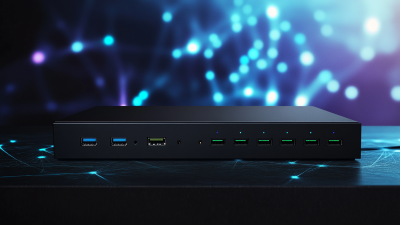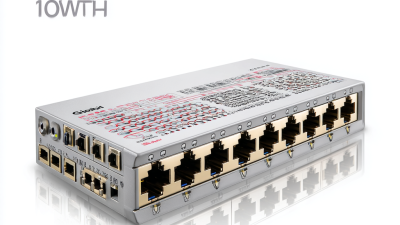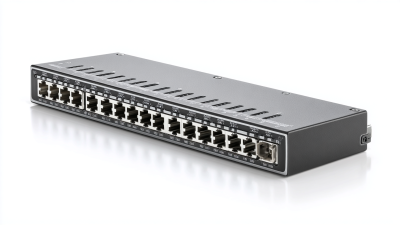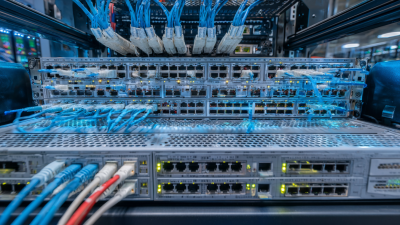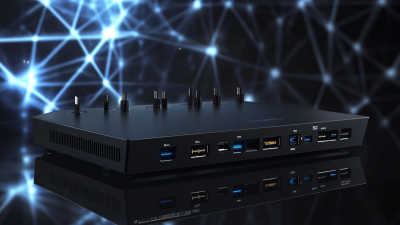
- hasivo@hasivo.com
- Mon - Sat at 7:00AM to 9:00PM
Leave Your Message

In today's fast-paced digital environment, ensuring optimal network performance is crucial for both businesses and home users alike. One of the key components that can significantly enhance data transfer rates and overall network efficiency is the Gigabit Switch. This technology not only supports higher bandwidth but also allows for seamless connectivity among multiple devices, leading to reduced latency and improved communication.

As we delve into the world of Gigabit Switches, this blog aims to provide a comprehensive understanding of their functionality and practical applications. We will explore various examples of Gigabit Switches, their benefits, and essential tips for selecting the right device to meet your specific networking needs.
By the end of this read, readers will have valuable insights into how investing in a Gigabit Switch can elevate their networking experience and contribute to a more robust and responsive digital infrastructure.
When selecting a gigabit switch, several key features can significantly enhance network performance. Firstly, it is crucial to consider the switch's port density. According to a recent report by the International Data Corporation (IDC), higher port density switches can reduce network bottlenecks and improve the overall data flow within organizations, enabling seamless communication between devices. A switch with 48 or more ports caters to growing network demands, especially in environments where multiple devices require connectivity.
Another vital feature is the support for Power over Ethernet (PoE). The 2022 Ethernet Alliance report highlights that PoE switches not only provide data connectivity but also supply power to devices like IP cameras and VoIP phones, eliminating the need for additional power outlets. This integration streamlines installation processes and can significantly decrease operational costs. Additionally, advanced features such as Quality of Service (QoS) and VLAN support offer enhanced traffic management and network segmentation, further optimizing performance and security. These features collectively assist in future-proofing the infrastructure as businesses evolve and technology advancements proliferate.
When it comes to network performance, choosing the right gigabit switch can significantly impact data flow and connectivity. The primary distinction between managed and unmanaged switches lies in their level of control and configuration. Managed switches provide users with an extensive range of features such as VLAN support, traffic prioritization, and remote management capabilities. In contrast, unmanaged switches are simpler, requiring no configuration and providing basic connectivity. For instance, the growth in cloud-managed networking solutions reflects a broader shift towards requiring more nuanced control in managing network resources.

Recent data indicates a surge in demand for both types of switches: managed switches are favored in larger, more complex network environments, providing scalability and advanced features necessary for efficient operations. Meanwhile, unmanaged switches have become increasingly popular in smaller setups where simplicity and affordability are key. Reports highlight that the market for 2.5GbE and 10GbE switches is expanding due to their cost-effectiveness and ability to meet higher bandwidth demands without a hefty investment. As organizations continue to evolve their networking strategies, the decision between managed and unmanaged gigabit switches will remain crucial in optimizing performance and meeting varying connectivity needs.
In today’s fast-paced business environment, the demand for efficient and high-speed networking solutions has led to the widespread adoption of gigabit switches. These devices play a crucial role in enhancing network performance across various sectors. For instance, in large corporate offices where numerous devices need to connect, gigabit switches provide the necessary bandwidth to support multiple simultaneous tasks without lag. This ensures seamless communication, video conferencing, and data transfer, which are vital for operational efficiency.
Additionally, gigabit switches are particularly beneficial for data-intensive industries, such as media and entertainment. Studios that work with large video files can utilize these switches to transfer data between servers and workstations quickly, thereby expediting production processes. Similarly, educational institutions are leveraging gigabit switches to connect numerous devices in classrooms and libraries, facilitating interactive learning experiences and online resources access.
In these real-world applications, gigabit switches not only enhance speed and connectivity but also contribute significantly to overall productivity and efficiency.
Setting up a gigabit switch effectively is crucial for maximizing network performance, especially in environments with high data traffic.
To begin with, it’s important to ensure that you properly position your gigabit switch within your network.
Ideally, place it in a central location to reduce latency and improve connectivity across all devices.
Additionally, use high-quality cables (preferably CAT6 or CAT7) to connect your devices. This will help in achieving the full potential of gigabit speeds and prevent bottlenecks.
Another essential tip is to configure Quality of Service (QoS) settings on your switch. Prioritizing network traffic can significantly enhance performance for critical applications such as video conferencing or online gaming. Regularly monitor network performance to identify any slowdowns or issues. Consider using features like VLANs to segment network traffic, which can optimize bandwidth usage and improve overall efficiency. By implementing these strategies, your gigabit switch can significantly boost your network's performance and reliability.
When working with gigabit switches, connectivity issues can often arise, hindering overall network performance. One of the most common problems is inadequate power supply, which can lead to switches failing to operate correctly. Ensuring your switch is connected to a reliable power source and that all cables are properly seated can help mitigate this issue. Additionally, checking for signs of overheating and ensuring proper ventilation can go a long way in keeping the switch functional.
Another frequent issue is misconfigured settings. Users might inadvertently set the switch to incompatible modes, which can result in suboptimal performance. It is crucial to ensure that the switch configuration aligns with the network requirements. This includes checking VLAN settings, port configurations, and Quality of Service (QoS) parameters. Regular firmware updates are also essential. Keeping the switch's firmware up to date can eliminate bugs and enhance security features, thus improving connectivity and network stability.

